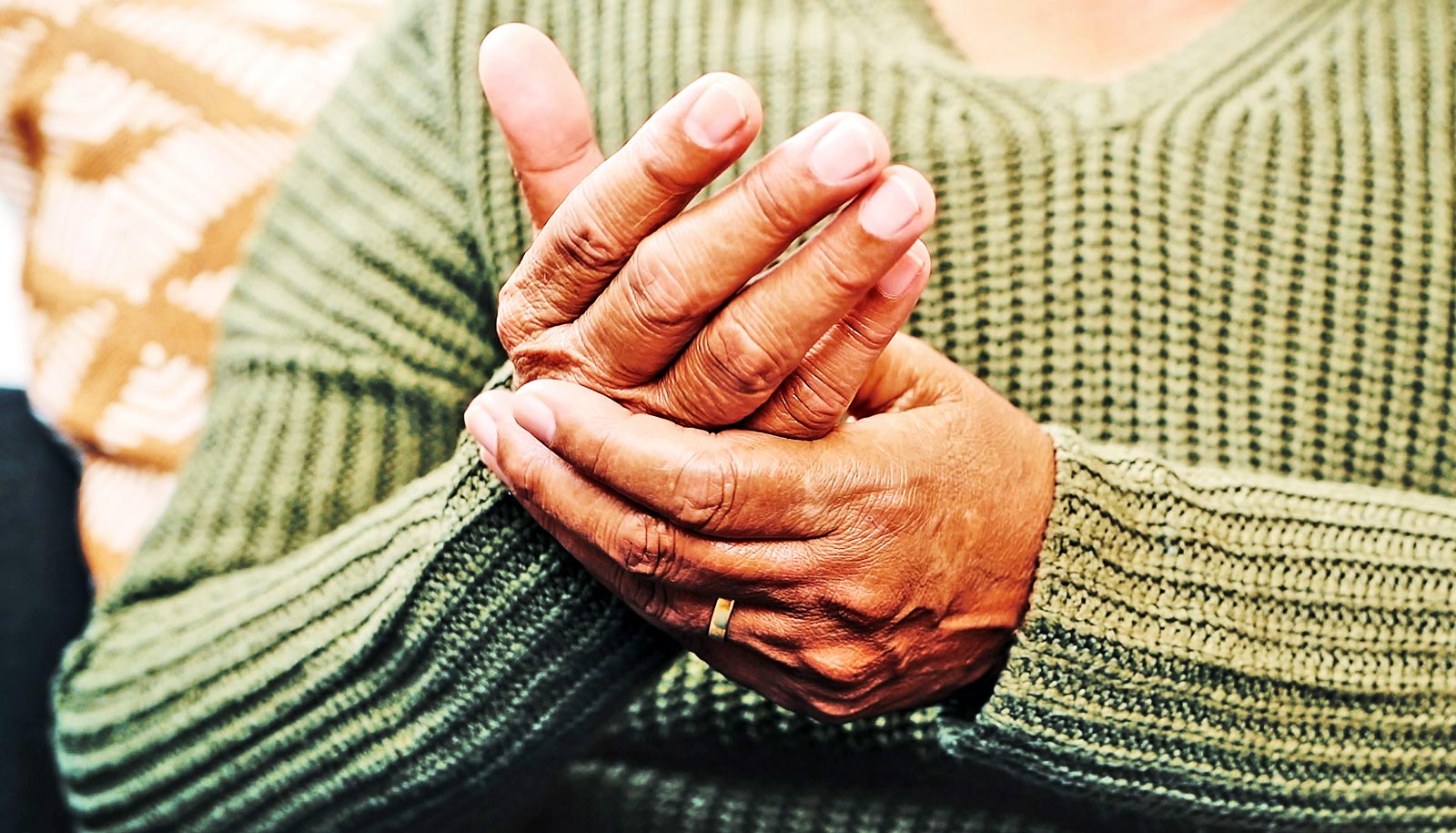The prevalence of moderate or severe arthritis joint pain varies strikingly across American states, ranging from 6.9% of the population in Minnesota to 23.1% in West Virginia, according to a new study.
The researchers used a combination of individual- and macro-level measures to reach new insights into geographic differences in pain and their causes.
“The risk of joint pain is over three times higher in some states compared to others, with states in the South, especially the lower Mississippi Valley and southern Appalachia, having particularly high prevalence of joint pain,” says first author Rui Huang, a sociology PhD student at the University at Buffalo.
“We also observed educational disparities in joint pain in all states that vary substantially in magnitude, even after adjusting for demographic characteristics.”
The percentage point difference in arthritis pain prevalence between people who did not complete high school versus those who obtained at least a bachelor’s degree is much larger in West Virginia (31.1), Arkansas (29.7), and Alabama (28.3) than in California (8.8), Nevada (9.8), and Utah (10.1).
“Education can function as a ‘personal firewall’ that protects more highly educated people from undesirable state-level contexts, while increasing the vulnerability of less educated individuals,” Huang says.
Nearly 59 million people in the US have arthritis, and at least 15 million of them experience severe joint pain because of that condition. Severe joint pain is associated with diminished range of motion, disability, and mortality.
While existing research on the social determinants of pain has relied primarily on individual-level data, individuals are embedded in social contexts, such as a specific US state.
Different states can have dramatically different policies that affect many aspects of life including opportunities, resources and social relationships, which can in turn influence individuals’ pain, a potential influence that has gone largely unexplored in previous research.
“Very little research has examined the geography of chronic pain, and virtually none has examined the role of state-level policies in shaping pain prevalence,” says coauthor Hanna Grol-Prokopczyk, associate professor of sociology. “We were excited to identify state characteristics that reduce residents’ risk of pain.”
The current study does so by combining data on nearly 408,000 adults (ages 25-80) from the 2017 Behavioral Risk Factor Surveillance System with state-level data about SNAP programs (formerly known as food stamps), Earned Income Tax Credits, income inequality, social cohesion (relationship strength among community members), Medicaid Generosity Scores, and tobacco taxes.
Although SNAP programs exist in all 50 states, some states offer more expansive benefits to qualifying residents than others. States with more generous SNAP benefits had a lower prevalence of pain. The same was true for states with greater social cohesion, indicating that both material resources and social functioning play critical roles in shaping pain risk.
“The increase in the generosity of SNAP benefits could potentially alleviate pain by promoting healthier eating habits and alleviating the life stress associated with food insecurity,” says Huang. “Social factors such as conflict, isolation, and devaluation are also among the ‘social threats’ that can lead to physical reactions such as inflammation and immune system changes.”
In addition to providing new information on pain disparities across states, the paper might also fuel a reorientation of pain research that puts equal emphasis on macro- and individual-level factors, according to Huang.
“Chronic pain can—and should—be addressed through macro-level policies, as well as through individual-level interventions,” Huang says. “This study also implies that pain research in general should move towards a greater understanding of the macro contextual factors that shape pain and pain inequalities.”
The study is published in the journal PAIN.
Source: University at Buffalo



